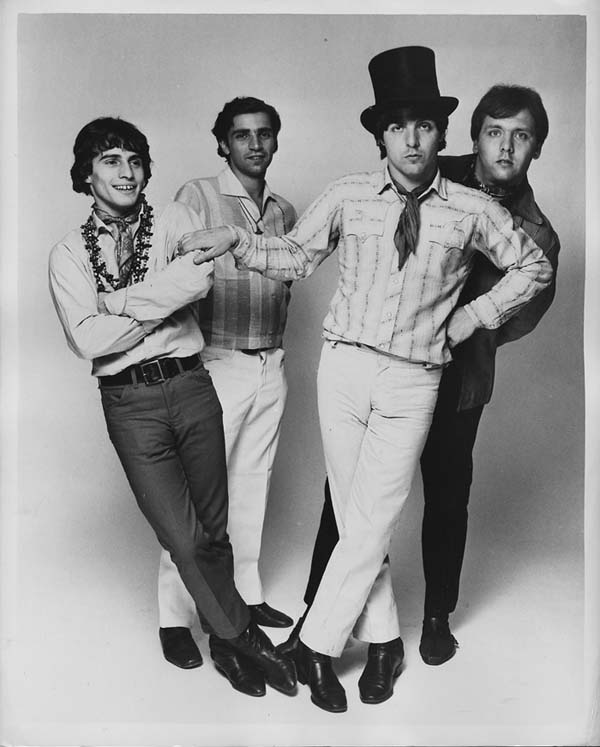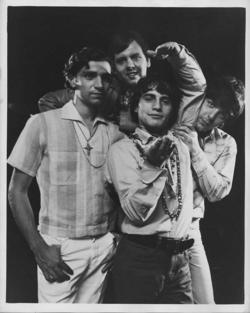|
|
|
 |
| Home Page | Rascals Photo Page 1 | Rascals Photo2 Page | Rascals Photo3 Page | Favorite Rascal Links Page | Rascals fans speak out | Guest Book Page | Catalog CD'S DVD SALE Page |
 |
| Welcome to THE RASCALS UNDERGROUND CLUB |
 |
|
Welcome to My YOUNG RASCALS UNDERGROUND Home Page THE YOUNG RASCALS Felix Cavaliere was a Syracuse University student in 1963 and playing with a popular campus group, Felix & The Escorts, when he was asked by Joey Dee & The Starliters (of Peppermint Twist fame) to join them on a tour of Europe. There, the young keyboardist met Eddie Brigati and Gene Cornish. "We didn't want to be somebody else's sidemen," recalled Cornish, so after a few months they left The Starliters and, with a drummer friend, Dino Danelli, began rehearsing together. According to Gene, "All of a sudden we hit magic in Felix's basement. We'd all been in bands before and we just looked at each other and went, 'woah!' It was just amazing; I can't explain it. That day literally changed my whole life. I think we blasted through 30 or 40 songs at that rehearsal. We knew we belonged together." As 1964 turned to 1965, the British Invasion was in full swing, and along with the soul/R&B sounds popular on the New York club scene frequented by the group, now dubbed The Young Rascals, The Beatles were a major influence. "We always admired The Beatles because they proved that you could write great songs as well as play and sing them," said Cornish. The Beatle connection didn't stop there, however. Sid Bernstein, the promoter who brought the Fabs to Shea Stadium, added The Young Rascals to the bill at that famous concert -- after having signed on a few months earlier as the group's manager.
In some accounts, Bernstein takes the blame for the schoolboy stage suits the group performed in at first, but Cornish remembers differently: "We had the outfits even before we had the name. Eddie came to the first rehearsal wearing it as a goof, joking around, and we said, 'What a great idea!' Before we had a hit record, before people remembered the name, they remembered the kids with knickers." The hit records and name recognition were soon to come, though, after Atlantic founder Ahmet Ertegun saw the band at a Westhampton nightclub and offered them a contract.
Atlantic was the perfect label for this mixture of black and white rock, given its legendary roster of soul performers and producers. "The Atlantic philosophy was a jazz philosophy of capturing an energy and a moment," says Cavaliere. "The feelings in those early recording sessions will be there forever." Atlantic producer/engineer Tom Dowd recalled: "The Rascals were unusual. They were a macho band. Three of them could sing like birds, but they played aggressively, even on ballads. There was an energy to them, a positive energy. They put on a great show and they were fun. They were dedicated to their concept.
The concept to which The Rascals were dedicated was, in Felix Cavaliere's words, "Marvin Gaye's voice, Ray Charles' piano, Jimmy Smith's organ, Phil Spector's production and The Beatles' writing -- put them all together and you've got what I wanted to do." A white rock band playing black soul music was a new idea for pop in 1965. "The great thing about music in the 1960s was that people were discovering there was no color barrier in the business. We were respected by the black groups we loved as much as we respected them," noted Cornish. The Rascals' music was dubbed "blue-eyed soul", a term Cavaliere never cared for. "I always hated the label because it created a separation between black and white music. It was a marketing concept. As soon as you put a drum in music, it's R&B. I wish it wouldn't have been called blue-eyed soul. My eyes aren't blue."
The band's first release for Atlantic was called "I Ain't Gonna Eat Out My Heart Anymore" which rose to number 52 in the U.S. in 1965, but it was their 1966 effort, "Good Lovin" that made them rock and roll stars. The song quickly rose to the number one spot on Billboard's Hot 100 and went gold. They followed with two more Top 20 hits, "You Better Run" and "I've Been Lonely Too Long" later the same year.
The writing was a key component of the band's success, as 16 of their 18 chart records were written by Cavaliere alone or in tandem with frequent collaborator Eddie Brigati. As the song writing progressed, social commentary began to show up in the music; the group's growing ambition was reflected in the change from "The Young Rascals" to simply "The Rascals." The word "young" had originally been inserted before the band's name for legal reasons -- it seems there was a group named Johnny Pulleo & The Harmonica Rascals who claimed a proprietary interest. "We were embarrassed about that, 'cause we were trying to be a soul band," said Cornish. "It wasn't The Silver Rascals or The Rockin' Rascals -- it was The Young Rascals! And we had to live with it. By the time we got to Groovin',' we said, 'Well, enough of this. We are The Rascals.'"
A high point for both Cornish and Cavaliere was 1968's #1 hit 'People Got To Be Free'. "The message in songs like People Got To Be Free is as important now as it ever was," says Gene. It was written in reaction to the King and Kennedy assassinations that year -- in fact, Cavaliere had worked for the RFK campaign. "That the song was #1 in places like Berlin and South Africa meant a lot to me," said Felix. Despite the initial resistance to the "political" nature of the record, it went on to become The Rascals' biggest-selling record. It was also their last #1 record. The jazz-tinged experimentation of later albums like Peaceful World and The Island Of Real (which Cavaliere once called "the best record I ever made") proved less commercial than the group's earlier garage-soul.
Management was less than supportive of the new directions the band was headed in and a switch to the Columbia label in 1971 failed to provide the new life they were looking for. Personal frictions were on the rise too, and eventually Brigati and Cornish quit the band. They were replaced with Buzzy Feiten (from The Paul Butterfield Blues Band) and Ann Sutton, who had sung with various soul and jazz groups in Philadelphia. By 1972, the Rascals called it quits.
Brigati recorded a solo album with his brother, David in 1976. Cornish and Danelli started a new band called "Bullfrog" and later teamed up with former Raspberries guitarist, Wally Bryson in "Fotomaker". In 1982, Danelli joined Steve Van Zandt's "Little Steven".
Danelli, Cornish and Cavaliere reunited in 1988 for a U.S. tour, but split soon after and were involved in a nasty law suit over the use of the band's name. Cavaliere continued as a solo artist and a producer, releasing a new album in 1994 as well as playing keyboards for Ringo Starr's All-Star Band.
In 1997, The Young Rascals were inducted into the Rock and Roll Hall Of Fame, but even here, the tensions that tore the band apart, rose again. All four former members of the band appeared for the ceremony, but Brigatti refused to join the others, accepting his award on the opposite side of the stage.
I Ain't Gonna Eat Out My Heart Anymore (#52 - 1965) Good Lovin'( #1 - 1966) You Better Run (#20 - 1966) I've Been Lonely Too Long (#16 - 1966) Groovin'(#1 - 1967) A Girl Like You (#10 - 1967) How Can I Be Sure (#4 - 1967) A Beautiful Morning (#3 - 1968) People Got To Be Free (#1 - 1968) Carry Me Back (1969)
|
 THE YOUNG RASCALS THE BEST IN BLUE EYE SOUL.  See More Rare Pictures join the underground club today..... |
||